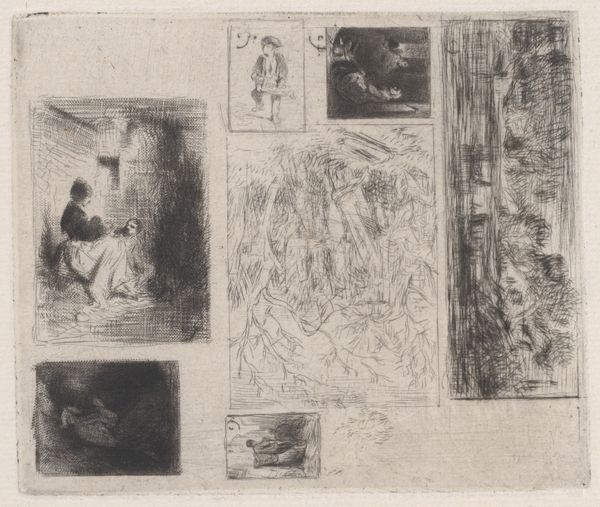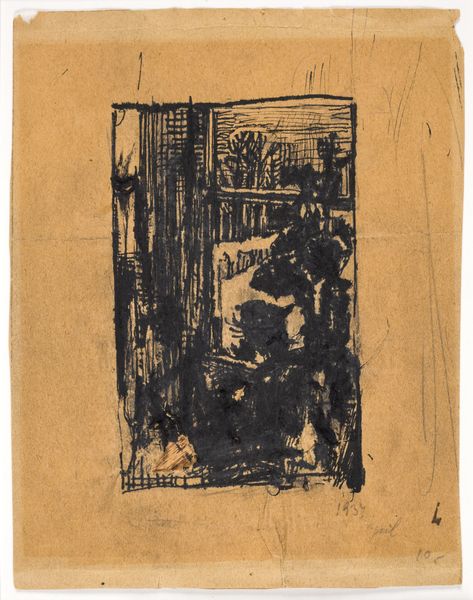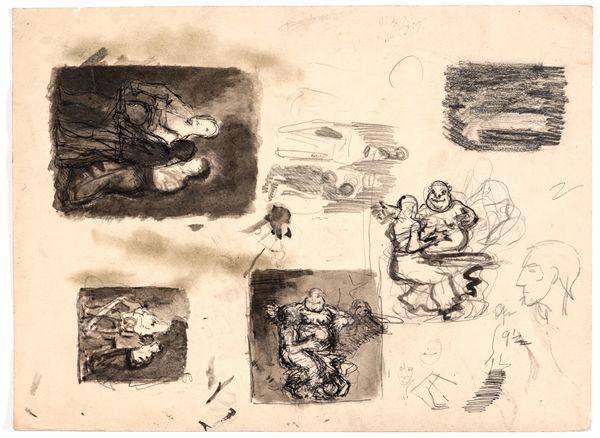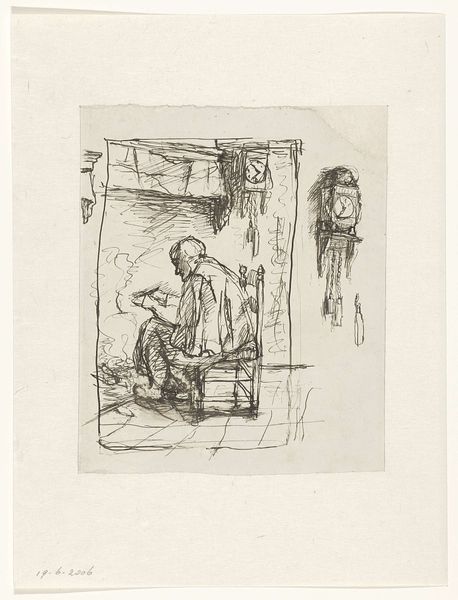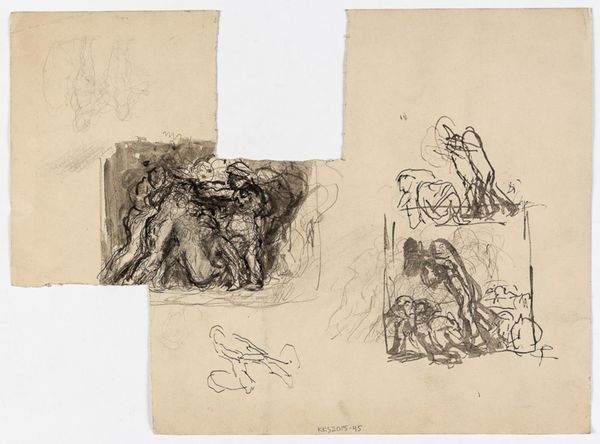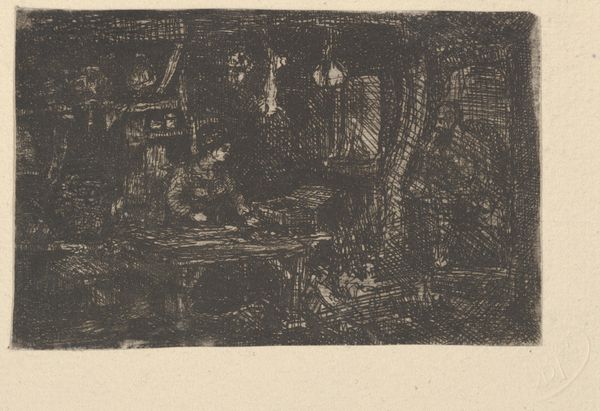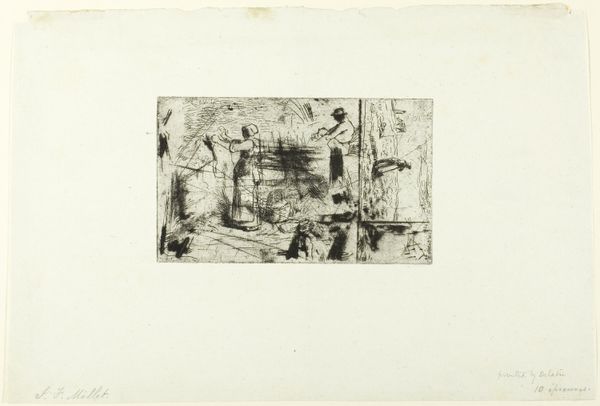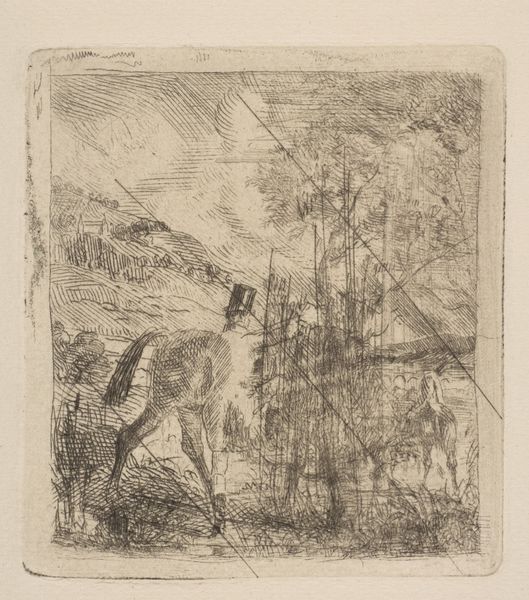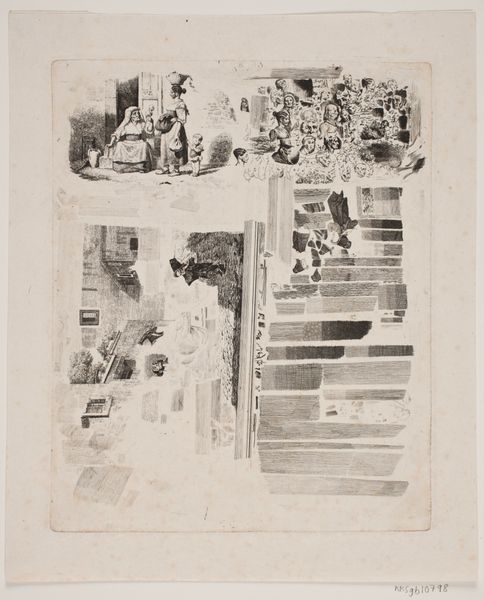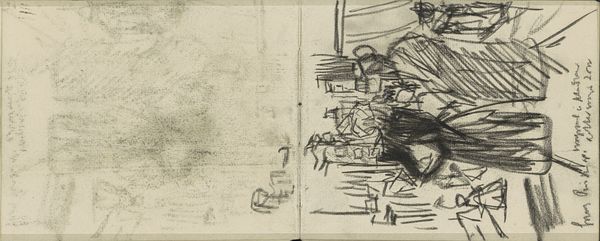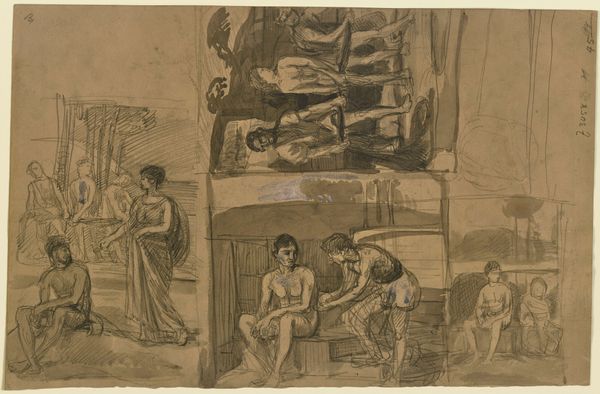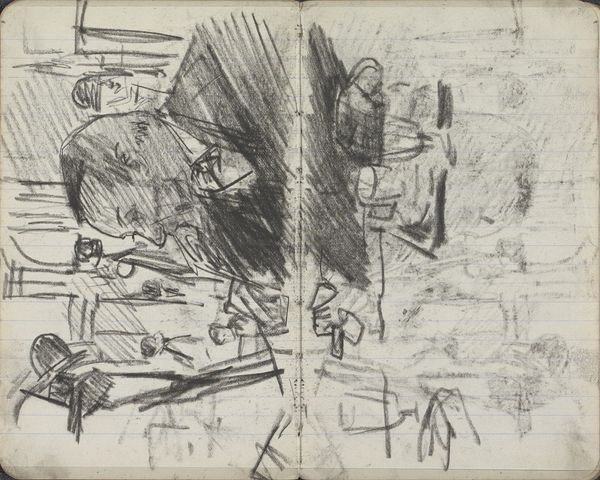
Tre fragmenter af komposition med knælende kvinde og en nonne samt fragmenter af en anden skitse 1840
0:00
0:00
drawing, mixed-media, paper, ink, pencil
#
drawing
#
mixed-media
#
narrative-art
#
ink painting
#
figuration
#
paper
#
ink
#
romanticism
#
pencil
#
pencil art
#
mixed media
Dimensions: 113 mm (height) x 167 mm (width) (bladmaal)
Curator: Here we have Martinus Rørbye's mixed-media drawing from 1840, titled "Tre fragmenter af komposition med knælende kvinde og en nonne samt fragmenter af en anden skitse"—or, in English, "Three fragments of composition with kneeling woman and a nun and fragments of another sketch." Editor: My immediate sense is that this drawing captures a deeply contemplative mood, even fragmented as it is. The contrast between the dark, almost brooding, central image and the softer pencil sketches is striking. Curator: The central scene, rendered in ink, presents a vivid tableau with a strong narrative feel. It draws upon familiar archetypes of religious iconography, and possibly also references to mortality through its imagery. Editor: Indeed, the composition's geometry pushes our eye to move. It’s very interesting: from the sharp angles of what seem to be architectural details in ink to the gently curved figures sketched in pencil—it feels intentionally disparate. Curator: And that interplay reflects Romanticism’s interest in the human condition – the struggles, the devotion. A kneeling woman is always pregnant with symbolical associations; the nun carries further connotations of piety. Editor: But it also presents visual problems. The perspective is a bit skewed, isn’t it? The viewpoint seems unstable, maybe deliberately. The artist invites us not to a clear scene but to various perspectives and levels of artistic rendering. Curator: Undoubtedly Rørbye plays here, within that fragmented sketch. Perhaps trying to grasp some transcendental or ethereal essence... the drawing seems suspended somewhere between the temporal and the eternal. Editor: Well, whether intentional or not, these visual instabilities makes the image incredibly contemporary and arresting. There is very little stable ground within it to firmly grasp. Curator: A lovely thought; it brings me to how the paper, as material, adds another layer to all these visual cues—worn yet preserved, witnessing past acts of making, acts of meditating. Editor: Right—the physical evidence of the artist at work contributes to its overall impact. This feels less like a finished work and more like a private, deeply resonant exploration that we're privileged to witness. Curator: It’s true—and something that stays with you long after you move on.
Comments
No comments
Be the first to comment and join the conversation on the ultimate creative platform.
